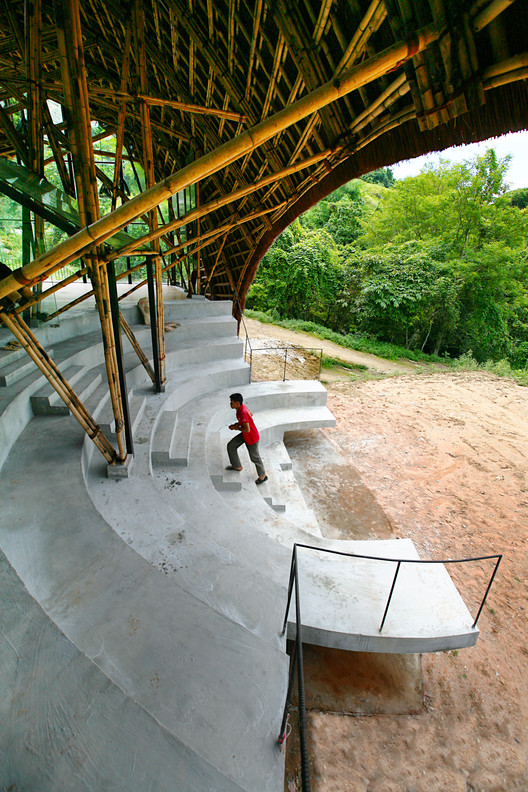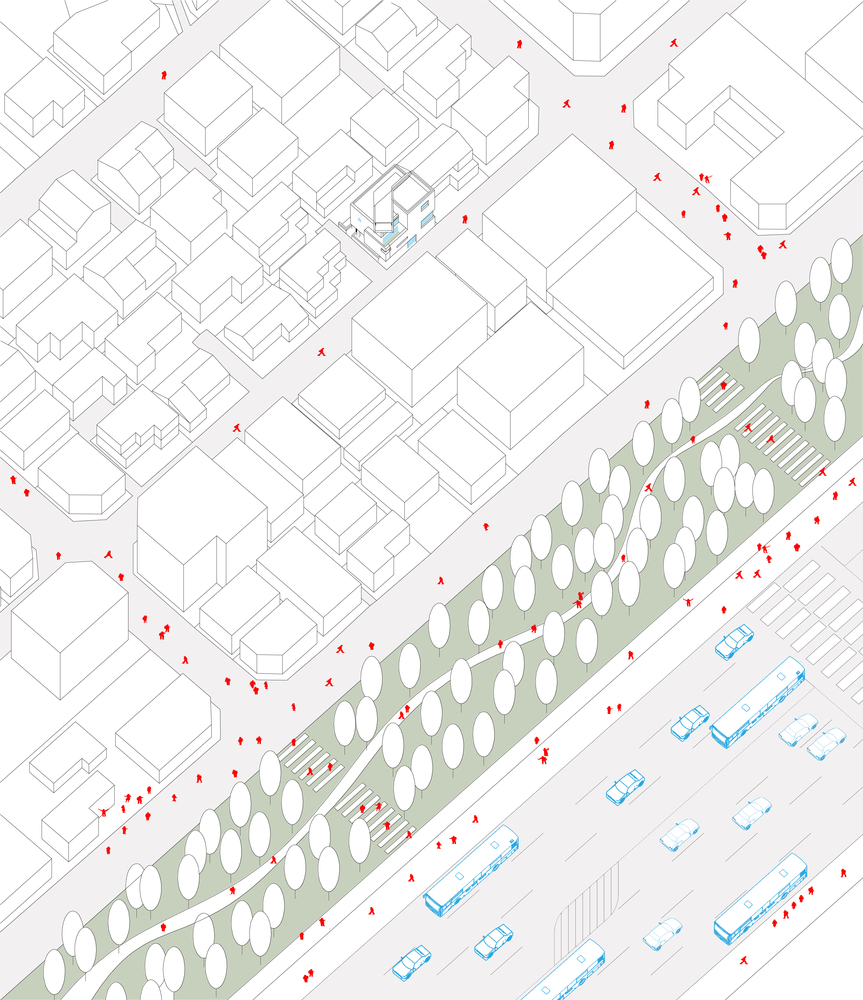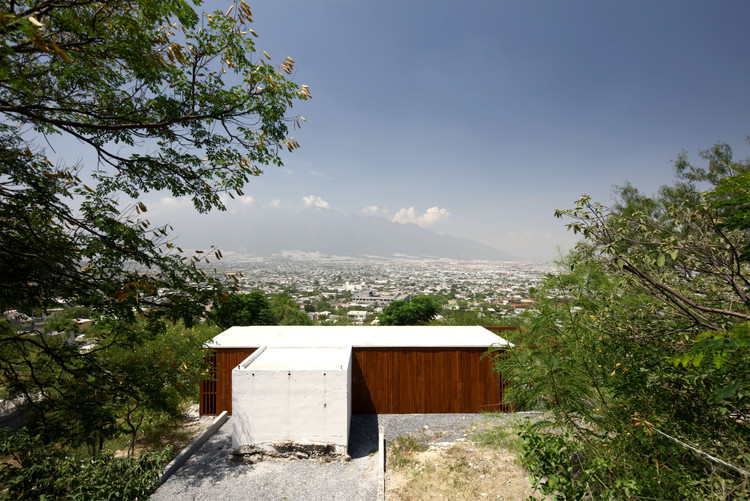AD Classics Casa Milà Antoni Gaudí
2013-05-03 01:00
1912年为Roser Segimon和Pere Milà建造,分为九层:地下室、底层、阁楼、主层、四层楼上和阁楼。底层是车库,阁楼是入口,主层是米拉家的,上层是出租的。这座建筑围绕着两个内部庭院,形成了一个平面上的8字形.屋顶上是著名的雕塑露台。实际上,它有天窗、紧急楼梯、风扇和烟囱,但每个功能的信封都具有自主雕塑的品质,这已经成为建筑物本身的一部分。
Constructed in 1912 for Roser Segimon and Pere Milà, the building is divided into nine levels: basement, ground floor, mezzanine, main floor, four upper floors, and attic. The ground floor acted as the garage, the mezzanine for entry, the main floor for the Milàs, and the upper floors for rent. The building surrounds two interior courtyards, making for a figure-eight shape in plan. On the roof is the famous sculpture terrace. Practically, it houses skylights, emergency stairs, fans, and chimneys, but each function’s envelope takes on an autonomously sculptural quality which has become a part of the building itself.
从结构上讲,建筑物分为结构和表皮。石面没有承重功能。具有相同曲率的钢梁通过附加在结构上来支撑正面的重量。这使高迪能够在没有结构约束的情况下设计立面,并最终使他能够构思一个连续弯曲的立面。支撑屋顶的结构也允许一个有机的几何图形。由270个不同高度的抛物面砖拱组成,脊椎骨状的肋骨结构在上面创造了不同的地形。
Structurally, the building is divided between structure and skin. The stone façade has no load-bearing function. Steel beams with the same curvature support the facade’s weight by attaching to the structure. This allowed Gaudi to design the façade without structural constraints, and ultimately enabled his conception of a continuously curved façade. The structure holding up the roof, too, allows for an organic geometry. Composed of 270 parabolic brick arches of varying height, the spine-like rib structure creates a varied topography above it.
形式上,外墙可以分为三部分:横跨底层的街道立面;主立面,包括主楼和上层;屋顶结构,其中包括阁楼和屋顶花园。由石灰石砌块制成,主要外观的曲线具有有机的质感和质感。上面是一个曲线团,超现实主义的拟人化雕塑栖息在此。他们的存在有助于几乎流动的活力的建筑物的美学。
Formally, the façade can be read in three sections: the street façade, spanning the ground floor; the main façade, including the main and upper floors; and the roof structure, which houses the attic and supports the roof garden. Made of limestone blocks, the curve of the main façade has a weighty and textured quality of the organic. Above it is a curvaceous mass on which surrealist anthropomorphic sculptures perch. Their presence contributes to the almost flowing dynamism of the building’s aesthetic.
卡萨·米拉最终是一座有争议的建筑,它为现代派运动和整个现代主义做出了巨大贡献。它推动了直线的形式边界,正如高迪故意从自然和有机的形式为建筑物的形状,显着启发生物模仿实践。高迪是一个结构和形式的天才,卡萨米拉证明了这一点。
The Casa Milà, which was ultimately a controversial building, contributed greatly to the Modernista movement and modernism as a whole. It pushed formal boundaries of rectilinearity and, as Gaudi intentionally drew from natural and organic forms for the building’s shape, significantly inspired practices of biomimicry. Gaudi was a genius of structure and form, and the Casa Milà attests to that.
© Usuario de Flickr: jacqueline.poggi
c Usuario de Flickr:Jacqueline.poggi
建筑师Antoni Gaudílocation巴塞罗那,西班牙类别住房建筑师主管Antoni Gaudi客户Roser Segimon和Pere MilàProject年份1912年照片塞缪尔·路德维希,Usuario de Flickr:Jacqueline.poggi,Gideon Jones制造商装货.
Architects Antoni Gaudí Location Barcelona, Spain Category Housing Architect in Charge Antoni Gaudi Client Roser Segimon and Pere Milà Project Year 1912 Photographs Samuel Ludwig, Usuario de Flickr: jacqueline.poggi, Gideon Jones Manufacturers Loading...
 举报
举报
别默默的看了,快登录帮我评论一下吧!:)
注册
登录
更多评论
相关文章
-

描边风设计中,最容易犯的8种问题分析
2018年走过了四分之一,LOGO设计趋势也清晰了LOGO设计
-

描边风设计中,最容易犯的8种问题分析
2018年走过了四分之一,LOGO设计趋势也清晰了LOGO设计
-

描边风设计中,最容易犯的8种问题分析
2018年走过了四分之一,LOGO设计趋势也清晰了LOGO设计








































































